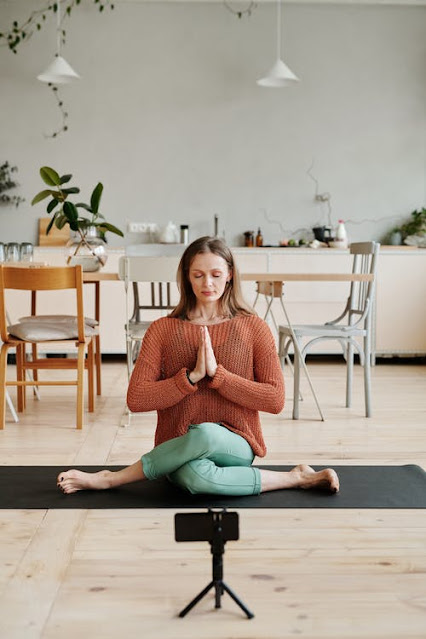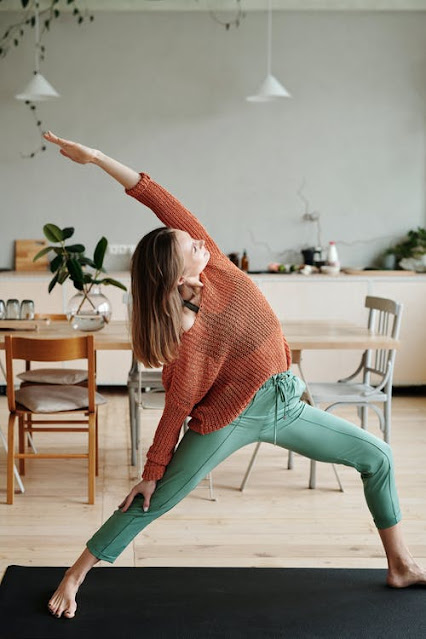when it
comes to physical activity, the equation is straightforward: When we move a
lot, our bodies are able to support movement. However, communication is also
true. When we sit, we are stronger and weaker, so the movement becomes even
more difficult.
"Many
older people are isolated and inactive, which is why they have trouble walking
and walking when the time comes," explains Brittany Ferry, PhD, CPRP,
occupational therapist at Medical Solutions Barcelona. "
n in
particular, walking exercises can be an important part of increasing longevity
and quality of life, especially for older adults. These are steps that control
the range of motion in our joints (not to be confused with flexibility, which
is about increasing the length of our muscles). Having plenty of movement helps
prevent falls, promote balance and communication, and maintain independence
later in life by allowing us to perform better in daily activities.
How can
exercise improve longevity?
Exercise can
allow us to stay active, which helps control blood pressure, improves blood
circulation, keeps joints and muscles flexible, and helps balance, explains Dr.
Ferry. "
By helping
us maintain adequate physical strength and balance, physical activity keeps us
safer and more independent, which in turn helps us to “move around [our] space
more easily and comfortably,” says Drs. Ferry. “This helps the elderly to
manage their own activities. participate. ”
What are the
most important parts of travel?
It can be
hard to feel that you have to make a fitness routine that involves all the body
parts and the limb. But Drs. Ferry says focusing on a few key areas can be a
good start.
Drs. Ferry
also says that the back and spine are important areas for improving working
life. Both help us to walk uprightly, which means that our eyes will be wide
open to explore the dangers that could cause us to stumble and fall.
The 6 best
tests for walking with longevity and healthy aging
Try to do
this movement in the hips, back, and in the middle of as many days a week as
possible, take your time and focus on the right posture. If you feel any pain
or discomfort, stop and consult your healthcare provider.
1. Walking with a tightrope
This
challenging movement activity improves your balance and slow motion.
Find a line
on the floor (either on the floor planks / tiles or on the edges of the main
tile) and walk slowly with one foot in front of the other for its length,
placing your arms facing each side to measure.
2. Tree shape
Taken from
yoga, this condition promotes stability to maintain your balance, posture, and
mobility.
Stand both
feet next to another table or bar nearby to hold on to if you need to.
Lift one leg
up slightly and turn the foot outwards to stand on the inner edge of the
opposite thigh or shin.
Hold this position
for 10 to 15 seconds, then switch sides.
3. The marches lie on the ground
This is a
great work of moving the core and hips. The focus should be on controlling the
movement, moving slowly, and drawing your belly button inwards to keep your
spine neutral.
Lie on your
back with your hips bent so that your thighs are facing down, your knees high
in the air bend 90 degrees, and your shins are aligned with the ground.
Hold your
abs while slowly lowering one leg down, keeping your knees bent.
Slightly tap
your foot down and lift the leg back to its original position using only your
spinal muscles.
Swap legs,
alternating sides with 16 to 20 repetitions (8 to 10 reps per leg).
4. Foot taps
This
movement improves balance and coordination, while increasing the mobility of
the hip joints.
Hold on to
the table or table if needed to get balance.
Move one leg
to the side (as if playing with your legs) and press your foot down.
Return the
leg to its original position near one of your feet.
Rest for 1
to 2 seconds and repeat on the other side.
Swap feet 10
times in total.
As you get
stronger, you can move faster and increase the rep value
5. Standing marches
This
movement activity enhances basic strength, coordination, and postural balance,
and can support stable movement.
Hold on to
the table or table top.
Hold your
abs, then bend one hip and knee to lift the leg toward your chest as if walking
in place.
The other
legs, you raise each knee as high as you can.
Complete 20
repetitions, moving in control.
6. One leg shape
This
stabilizing activity builds the hip, spine, and leg strength and balance.
Hold on to
the table or table top.
Raise one
leg up by bending your knee and hip.
Rest for 10
seconds.
Repeat five
times in the same leg, then go to the next leg.
Remember,
staying active and moving your body can be the key to staying clean and
healthy. Even spending a few minutes each day busy can make a big difference.


